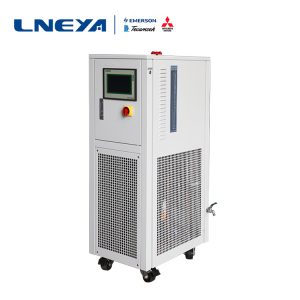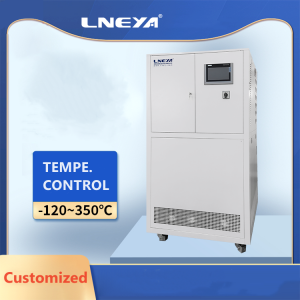Comment fonctionne le système de refroidissement industriel à eau? ?
When using industrial machinery, a cooling system may be required to prevent the machine from overheating. Refrigeration equipment can effectively keep materials in the optimal temperature range, but how does the chiller work? Understanding the working principle of industrial water chiller is very helpful to select the best refrigeration system to meet the needs of users.

Working principle of industrial water chiller
In short, industrial water chillers cool process fluids. Process fluid (usually water or water / glycol mixture) is used to cool machinery, equipment, etc. The process fluid absorbs heat from the cooled object and then passes through the chiller, where the heat is removed from the fluid and transferred to the ambient air.
Refrigeration circuit
The industrial water or glycol chiller system consists of two main circuits: refrigeration circuit and fluid circuit. The refrigeration circuit consists of four parts: compressor, condenser, expansion valve and evaporator. The refrigeration circuit removes heat from the process fluid. The fluid circuit usually consists of fluid reservoir, pump, filter and heat exchanger. The fluid circuit carries process fluid around the cooled object.
Refrigeration cycle steps:
Refrigeration circuit is the most technical part of the working mode of chiller. The refrigeration cycle uses the principle of thermodynamics to effectively transfer heat from one region to another. In the case of a chiller, heat is extracted from the cooled fluid and transferred to the ambient air.
Compresseur
The refrigeration cycle starts with the compressor. The compressor uses gaseous low-pressure and low-temperature refrigerant to compress it into high-pressure and high-temperature gas.
Condenseur
The gas then flows through the coils in the condenser. In the condenser, air or water will flow through the coil and remove heat from the refrigerant. As the refrigerant loses heat, it will begin to condense until all the gases condense into a liquid.
Soupape d'expansion
After leaving the condenser, the liquid passes through the expansion valve. The expansion valve limits the flow of refrigerant. When the high-pressure liquid passes through the expansion valve, it enters the evaporator.
Évaporateur
The evaporator is where the refrigerant begins to evaporate. When the refrigerant evaporates, it becomes very cold and absorbs a lot of heat. The process fluid will interact with the cold refrigerant in the evaporator. Heat is removed from the fluid and transferred to the refrigerant. The refrigerant then enters the compressor and the cycle begins again.
Recommandations connexes
-
Where will the reactor be used? How about the reactor temperature control system?
889Generally, non professionals should be confused about the reactor. The reactor is composed of reactor body, reactor cover, jacket, agitator, transmission device, shaft seal device, support, etc. It is generally understood as a container with physi...
Voir les détails -
Processus de réparation des défauts des compresseurs des machines à cycle fermé chaud et froid
994La machine à cycle chaud et froid de type fermé de LNEYA adopte la technologie de réfrigération en cascade d'une seule machine, et son compresseur utilise également un compresseur de marque, dont les performances sont plus stables. Par conséquent, il est facile de choisir une série de comp...
Voir les détails -
Introduction to heating cooling temperature control system of fermentation tank
1189In the pharmaceutical and biochemical industry, the fermentation tank needs to be equipped with a heating, cooling and temperature control system to control the temperature in the system. The LNEYA refrigeration, heating, cooling and temperature...
Voir les détails -
What are the power test systems for new energy car batteries?
965The LNEYA power battery system is tested for battery testing of new energy vehicles, but modern new energy vehicles have many types of batteries. So what are the characteristics? The ternary lithium battery refers to a lithium battery in which the...
Voir les détails
 LNEYA Industrial Chillers Fabricant Fournisseur
LNEYA Industrial Chillers Fabricant Fournisseur













